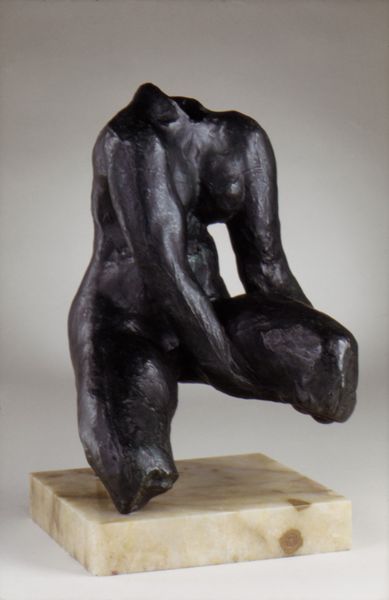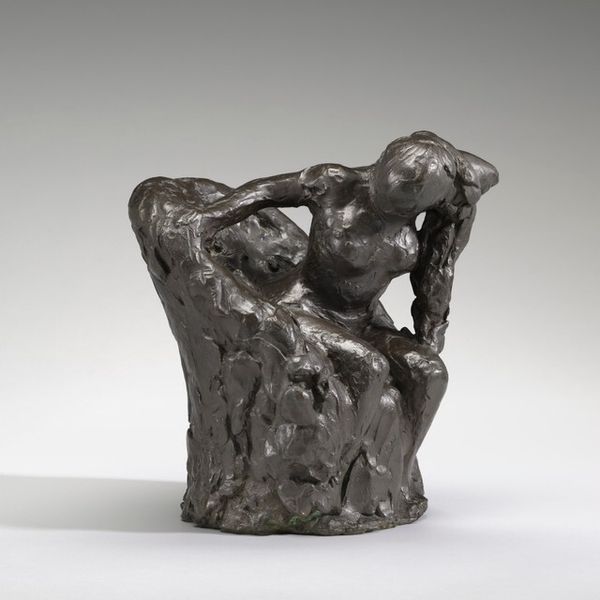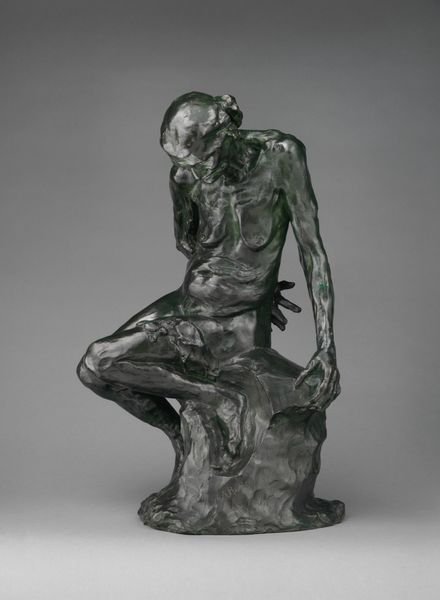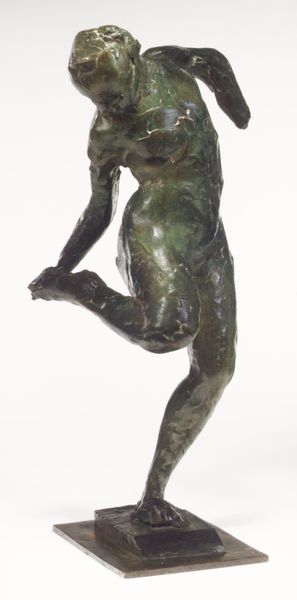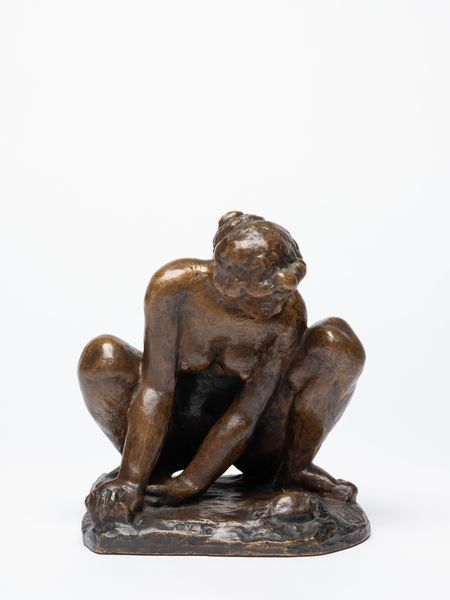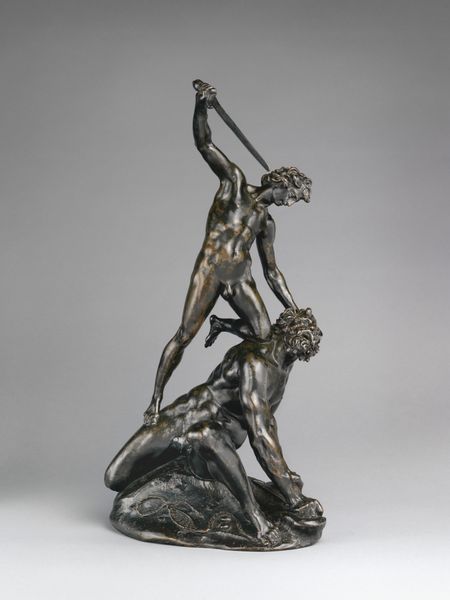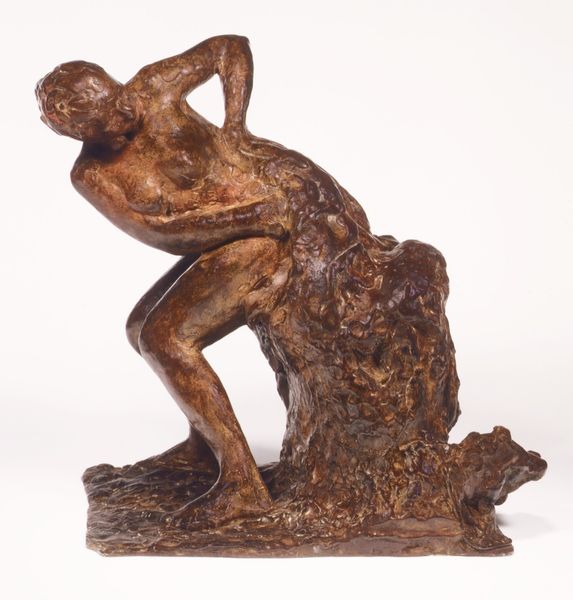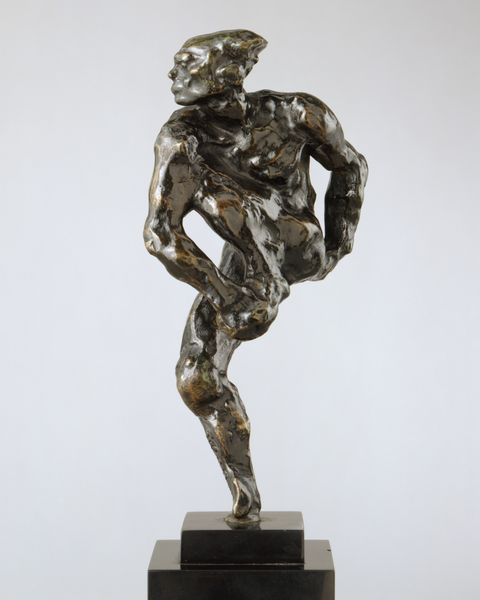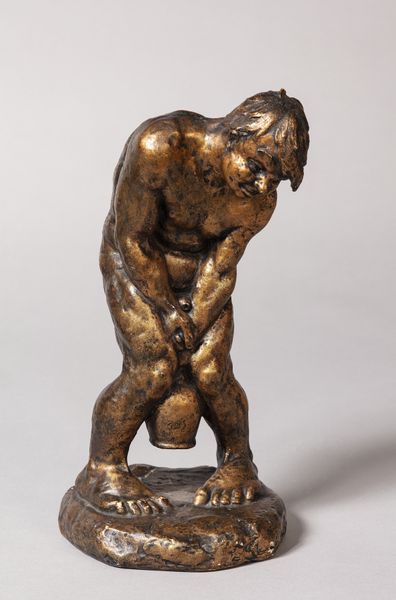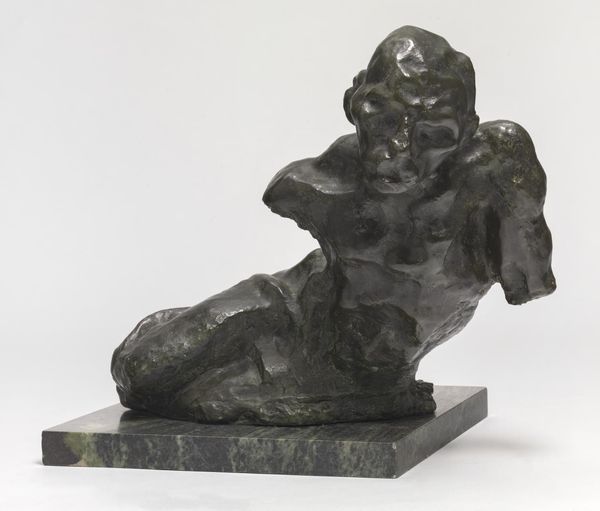
bronze, sculpture
#
sculpture
#
classical-realism
#
bronze
#
figuration
#
sculpture
#
history-painting
#
nude
Dimensions: height 195 cm, width 115 cm, width 110 cm, depth 80 cm, height 102 cm, width 102 cm, weight 317 kg
Copyright: Rijks Museum: Open Domain
This bronze sculpture, Titan, was created by Abraham Hesselink. You can really feel the weight of the material and the figure's pose, like a snapshot of an overwhelming burden being carried. The whole piece is alive with texture. Look closely at the way Hesselink has worked the surface of the bronze, creating these pitted, almost geological effects. It feels ancient, as if the sculpture has been sitting outside for hundreds of years. The green patina is like the slow brushstrokes of time itself. It’s especially noticeable around the face and hands, where the light catches the raised areas. And that little frog! It’s easy to miss, but it’s right there, on top of the rock. It seems so incongruous, this small, delicate creature supporting this huge, powerful figure. For me, it’s a reminder that art is full of these strange, beautiful contradictions. Think of Rodin, another sculptor who wrestled with the human form, and the tension between realism and something more abstract, more emotional. Art isn’t about answers, it’s about the questions.
Comments
rijksmuseum about 2 years ago
⋮
The Titans were the descendants of the first Greek deities, Uranos and Gaea. When the gods of Olympus rebelled against them, the War of the Titans erupted and the latter were overthrown. This Titan, about to throw a stone, gained acclaim at the Paris Salon of 1891 and was purchased in 1911.
Join the conversation
Join millions of artists and users on Artera today and experience the ultimate creative platform.
